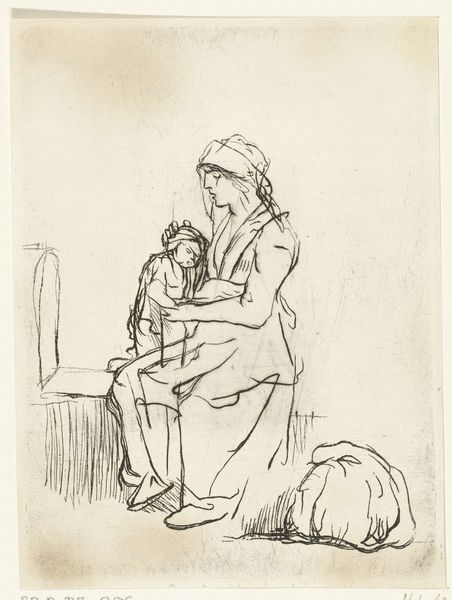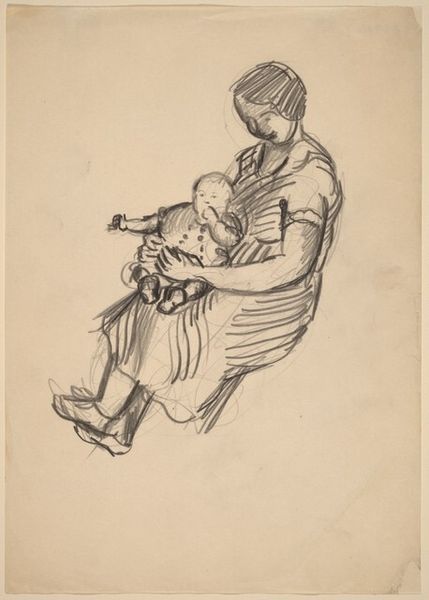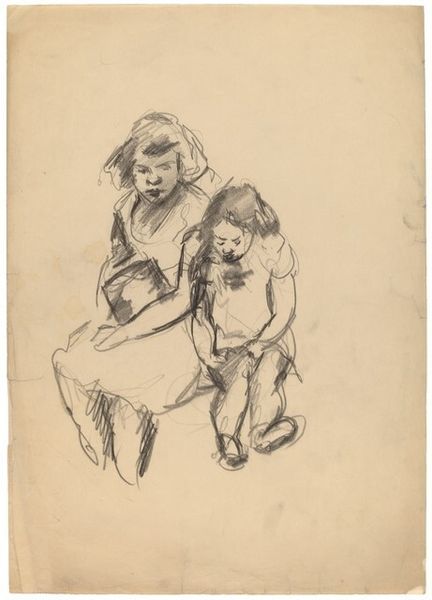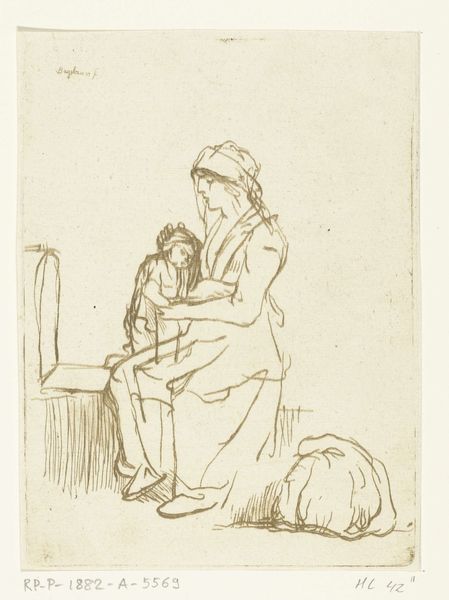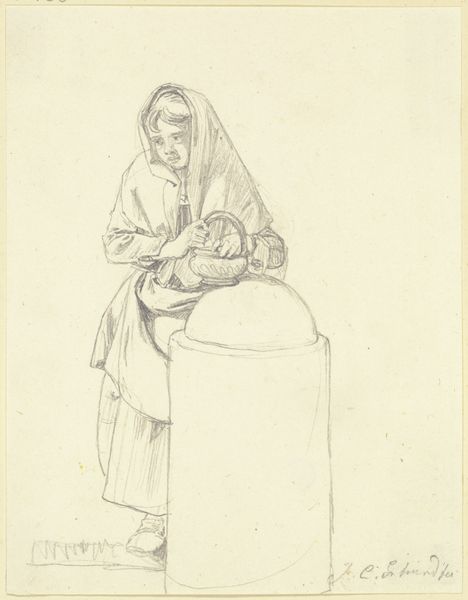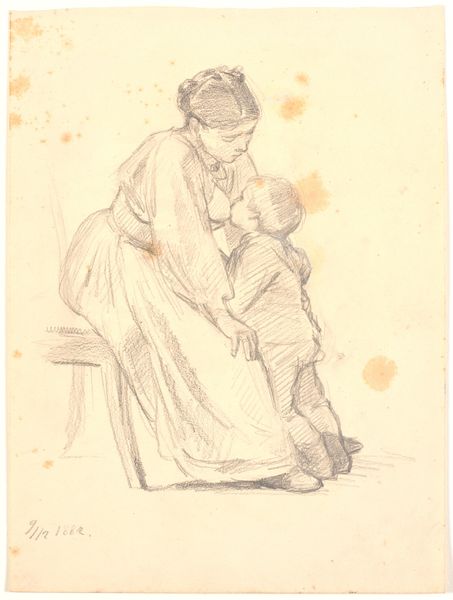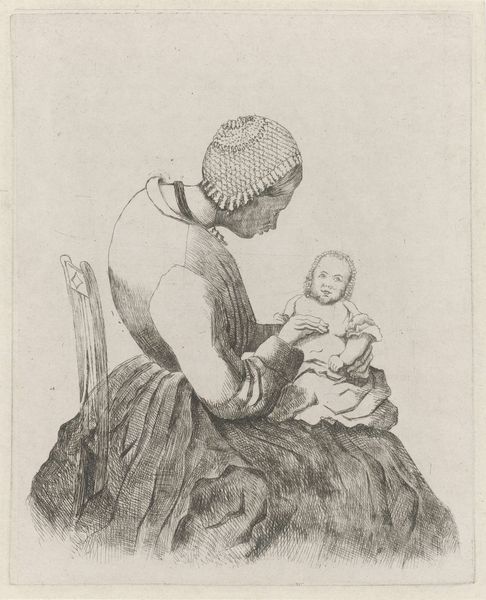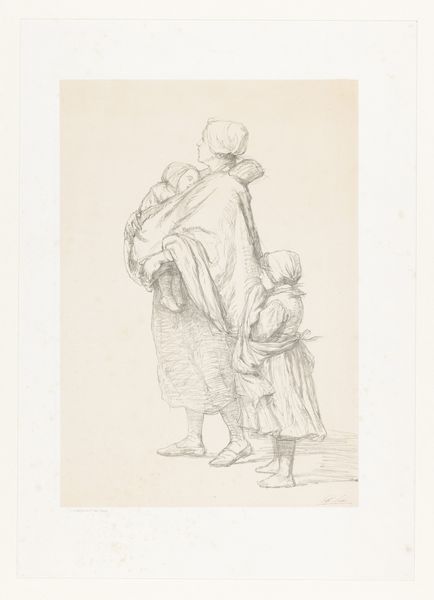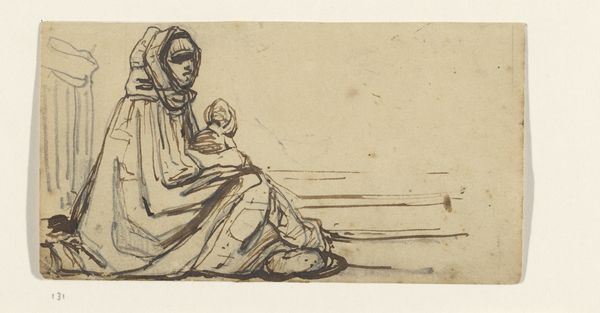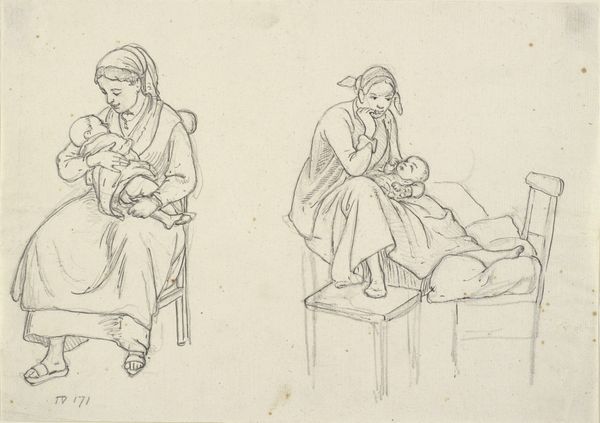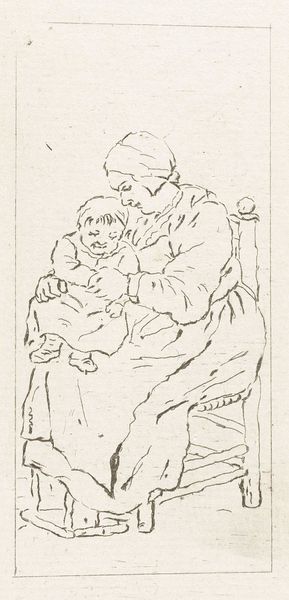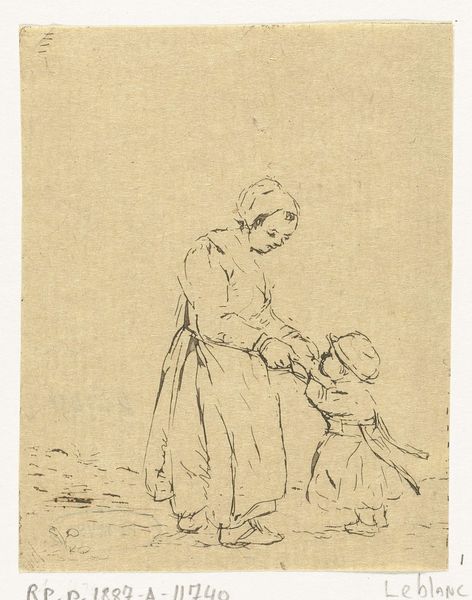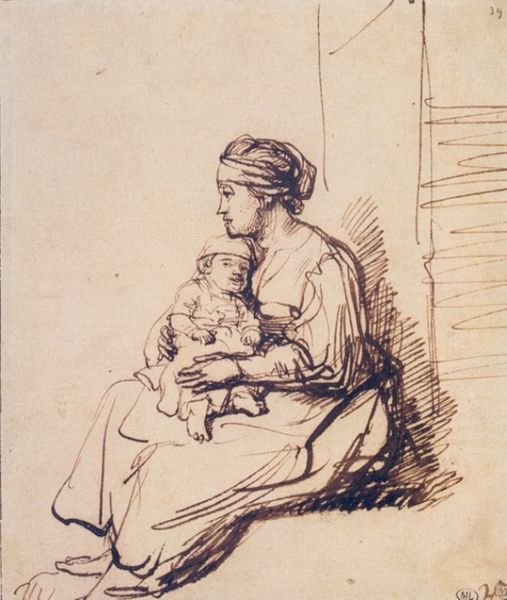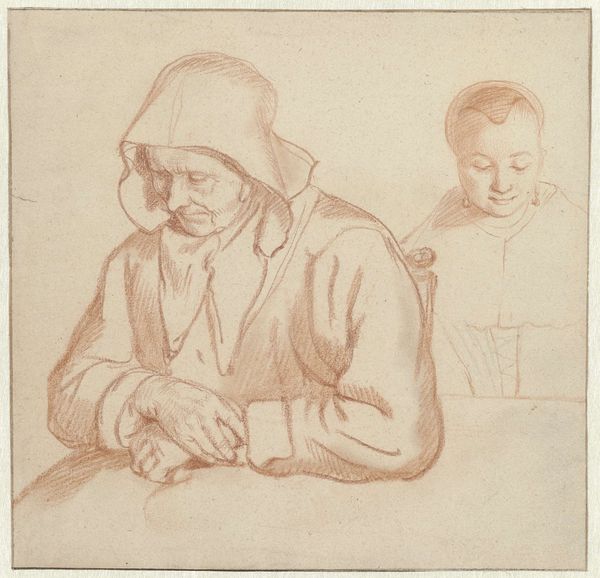
drawing, pencil
#
portrait
#
drawing
#
pencil
#
genre-painting
#
academic-art
Dimensions: 212 mm (height) x 147 mm (width) (bladmaal)
Curator: Here, we see Wilhelm Marstrand's pencil drawing from 1851, titled "Svensk pige med et barn på skødet"—"Swedish Girl with a Child in Her Lap," in English. Editor: Oh, it’s lovely, isn’t it? Such a simple composition, yet it evokes such a feeling of quiet intimacy. I love how the artist captures that fleeting moment of connection between a mother and child. Curator: Absolutely. Marstrand, associated with academic art, positions this image within a broader discussion around the idealized domestic sphere and gendered roles, particularly examining the representation of motherhood in 19th-century Scandinavian art. What's striking to me is how, within that idealized framing, one can trace anxieties about labor, class, and national identity. Editor: That's fascinating. For me, the drawing speaks more to the universal experience of motherhood, and you are absolutely right about the quiet sense of anxiety there. I'm really drawn to the soft, gentle strokes used to depict their faces. It’s so delicate. It feels incredibly human and intimate, even across time. I keep thinking about what she is thinking. Curator: Well, what do you suppose she might be contemplating? Her position and possibilities as a young working class mother within that specific historical and cultural landscape? Editor: Perhaps. Or maybe she is thinking about laundry day or how to make the potato harvest last through the winter. To me it feels more immediate, more like a moment suspended in time—what many mothers continue to feel and experience in the everyday pressures of motherhood. The weight of responsibility but also of connection and hope. Curator: I agree. While the simplicity of the scene can allow for an engagement with our own lived experiences and emotional connections, a deeper reading, grounded in social and historical context, enriches that connection by underscoring the cultural factors that informed its very creation, as well as the reception of it during Marstrand's lifetime and ever since. Editor: I love that idea. I guess in the end the drawing holds space for both those perspectives. You've definitely given me a lot to think about. Curator: As you have for me. Thank you.
Comments
No comments
Be the first to comment and join the conversation on the ultimate creative platform.
